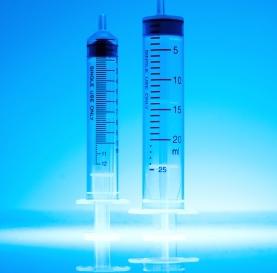
Today, Novartis officially launched the highly anticipated first U.S. biosimilar, ZARXIO. ZARXIO was approved for the same indications as its innovator brand, Amgen’s NEUPOGEN, and is priced at a 15% discount.
Payers certainly see biosimilars as an opportunity for cost savings as recent innovations in the specialty pipeline have overwhelmed budgets, with recent examples in hepatitis C, immuno-oncology, and the new cholesterol-lowering agents, REPATHA and PRALUENT.
In the spring of this year, HIRC surveyed commercial health plan pharmacy and medical directors on the topic of biosimilars to assess what might occur when they finally hit the U.S. market. A majority of the commercial plans surveyed plan to advantage biosimilars relative to the referenced branded product, with some caveats:
- Provider Confidence: Commercial payers identify a number of barriers to rapid biosimilar adoption, number one being provider comfort and confidence. In follow-up interviews with pharmacy and medical directors, it was most often reported that comfort levels with biosimilars among physicians in their network was low or that it was too early to tell. Others stated that providers are taking a “wait and see” approach until biosimilars demonstrate real world evidence of similar efficacy and safety.
- True Cost Savings: Commercial payers also state that they must be able to achieve true cost savings to consider advantaging biosimilar medicines, in that the discount of the biosimilar would have to “beat” any existing contracts that the health plan has in-place with the manufacturer of the referenced brand. Will 15% hit the mark?
- Interchangeability: Our payer panel also brought up interchangeability as critical in biosimilar uptake. A biosimilar can be approved by the FDA as “interchangeable” with the referenced brand – or not. Interchangeability with the referenced brand is defined by the FDA as:
“a product that has been shown to be biosimilar to the reference product, and can be expected to produce the same clinical result as the reference product in any given patient. In addition, to be determined to be an interchangeable biological product, it must be shown that for a biological product that is administered more than once to an individual, the risk in terms of safety or diminished efficacy of alternating or switching between use of the biological product and the reference product is not greater than the risk of using the reference product without such alternation or switch.”
The verdict on ZARXIO? Not interchangeable. This has implications, again, for provider confidence, but also may make payers reluctant to switch those already on the branded therapy. Further, pharmacists will not be able to automatically substitute ZARXIO for NEUPOGEN.
Despite these barriers, payers are generally excited about biosimilars, especially with patent expiries approaching on a number of big ticket branded specialty drugs, such as NEULASTA, HUMIRA, TYSABRI, and REMICADE.
Our commercial health plan panel discussed a number of ways that the barriers above could be mitigated, citing sufficient data and studies that demonstrate clinical equivalence to the reference brand, clear FDA guidance around interchangeability, safety, and efficacy, and similar levels of clinical and financial support available from the manufacturer of the biosimilar. One thing is clear – health care costs, and particularly specialty and oncology drug costs, are unsustainable. Perhaps biosimilars are part of answer.

